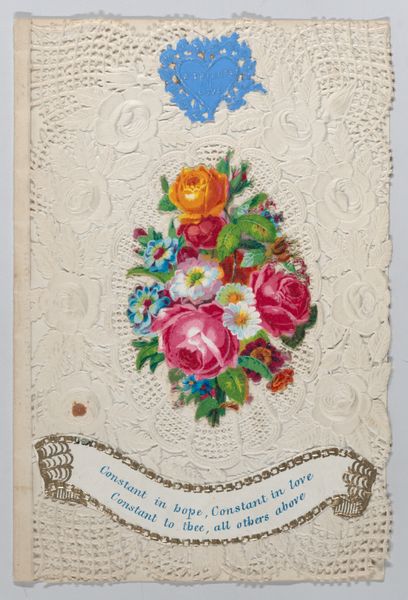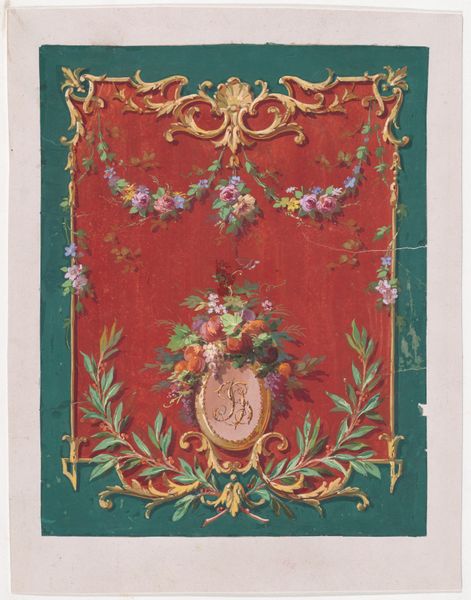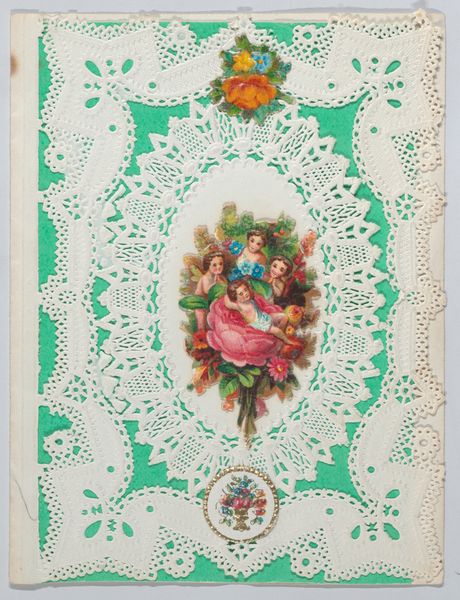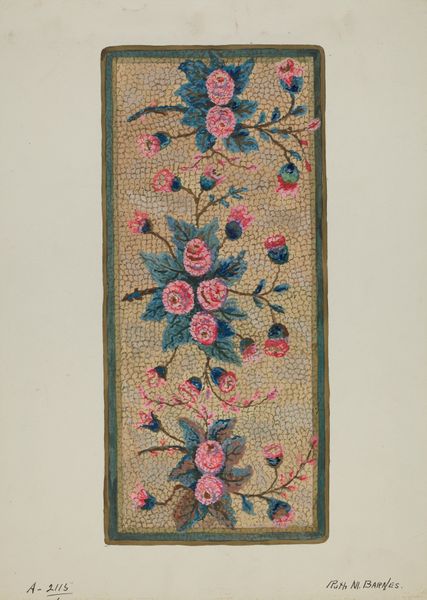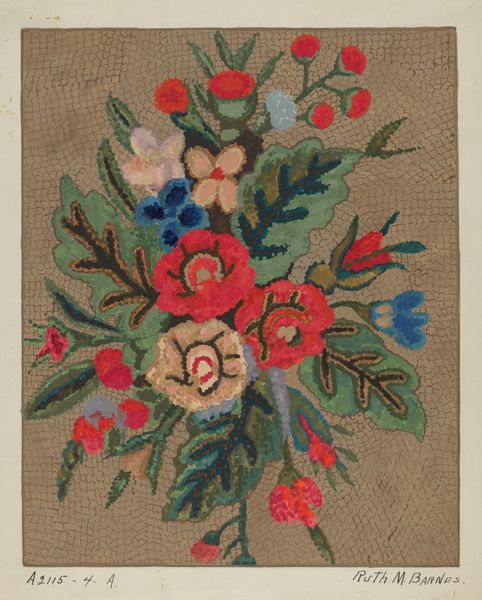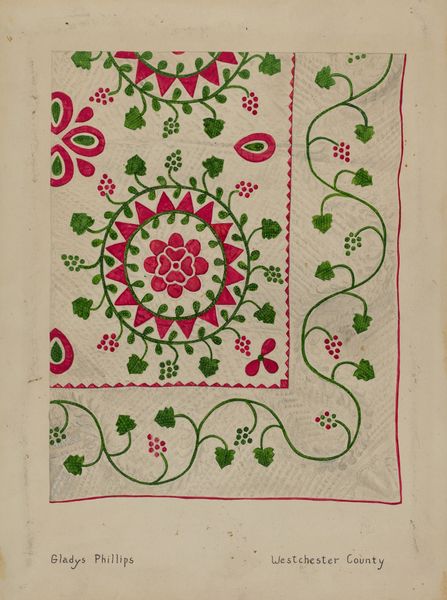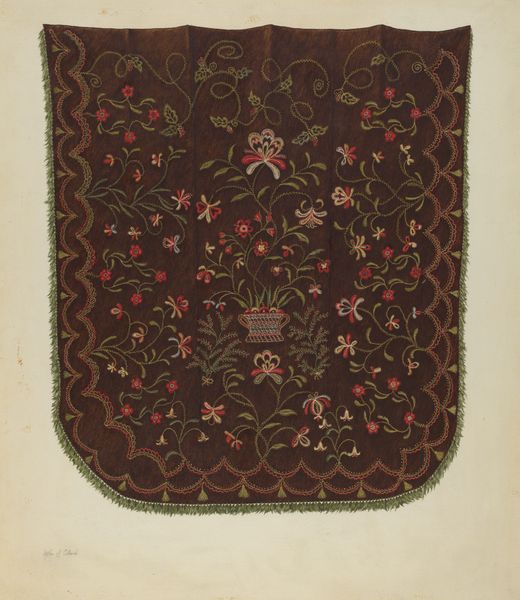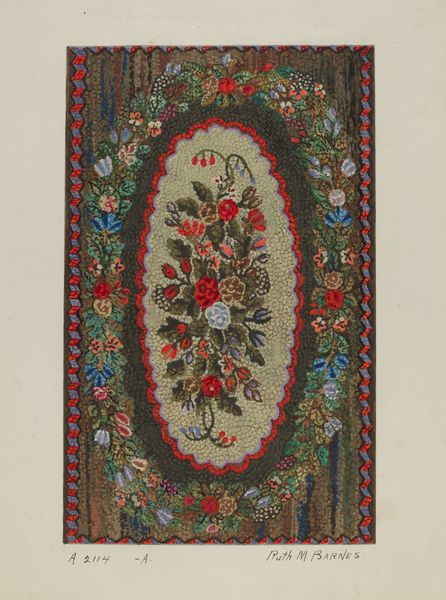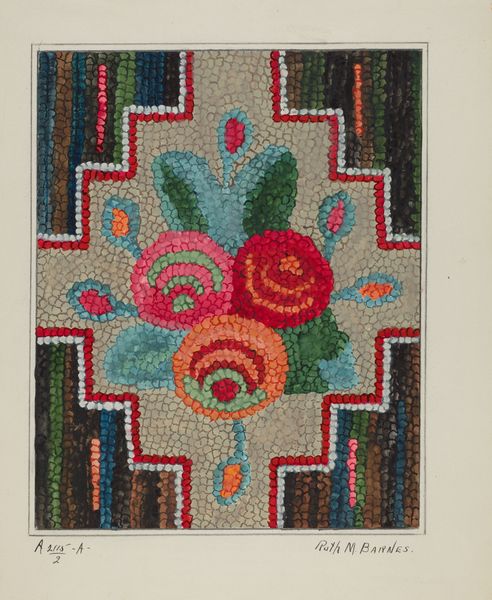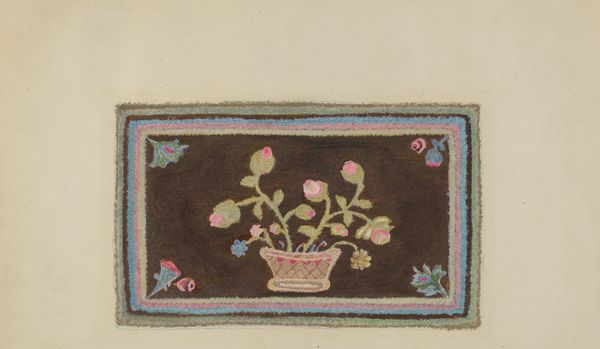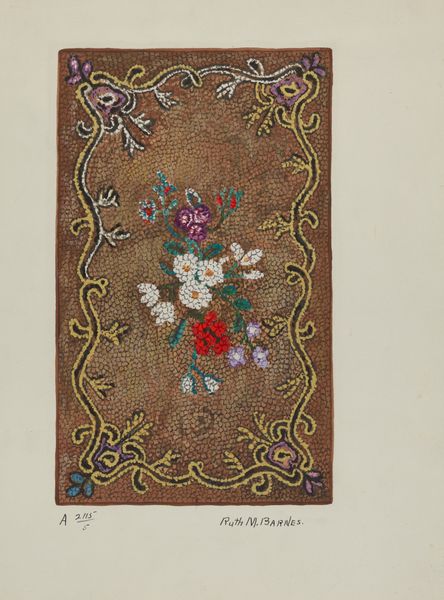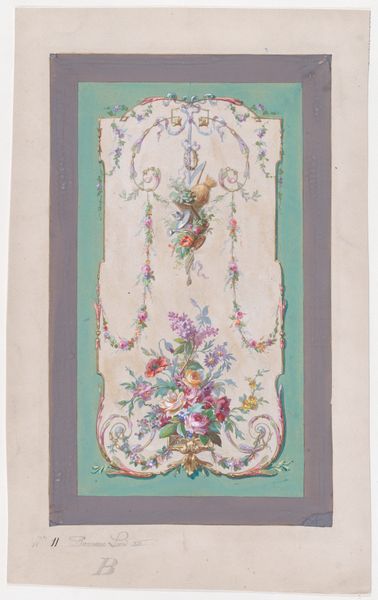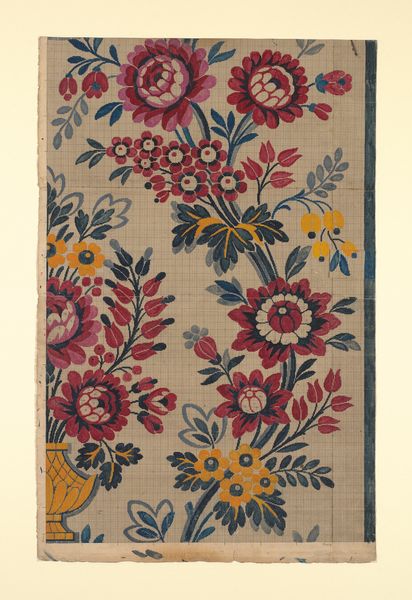
drawing, painting, watercolor
#
drawing
#
painting
#
folk art
#
watercolor
#
folk-art
#
decorative-art
#
decorative art
#
watercolor
Dimensions: overall: 35.6 x 25 cm (14 x 9 13/16 in.) Original IAD Object: 24" wide; 33" long
Copyright: National Gallery of Art: CC0 1.0
Curator: Let's turn our attention to "Hooked Rug," a watercolor, gouache and graphite on paper work, dating to around 1936. Editor: It’s so vibrant! The overall effect is almost jewel-like—the way the dark greens offset those saturated flower colors feels very deliberate. Curator: Considering the medium, the treatment mimics the texture of an actual hooked rug rather convincingly, doesn't it? What historical or social narratives might it evoke for you? Editor: Instantly, I think of the Arts and Crafts movement and the reclamation of domestic crafts. There's a palpable tension, here, too, between the object's functionality, its domestic sphere, and the ambition to create fine art. It feels like it is questioning those boundaries. Curator: Precisely! Rug hooking, often associated with women's labor and domestic space, speaks to a broader historical narrative concerning the devaluation of women's work. Even the flowers can be viewed as cultural symbols--love, celebration of the home, they could also symbolize ideals of feminine virtue and domesticity prevalent in that era. Editor: The arrangement is fascinating too, very deliberately placed and tightly grouped—perhaps representing more than just beauty. The colours and species perhaps all have significance? Curator: It’s possible. Folk art often draws from deeply personal or community narratives, though decoding these now is speculative. Yet we see decorative arts elevated, carrying messages about gender, class, and access within the art world itself. Editor: I agree; that blend of comfort and something a little deeper continues to resonate with me, like a whisper from another era. Curator: Yes, considering how it positions itself amidst broader dialogues regarding gender and artistic merit allows us to see this artwork beyond its decorative beauty. Editor: Precisely! Thank you for opening my eyes to these narratives. Curator: And you, for helping visualize the potential of everyday art!
Comments
No comments
Be the first to comment and join the conversation on the ultimate creative platform.
